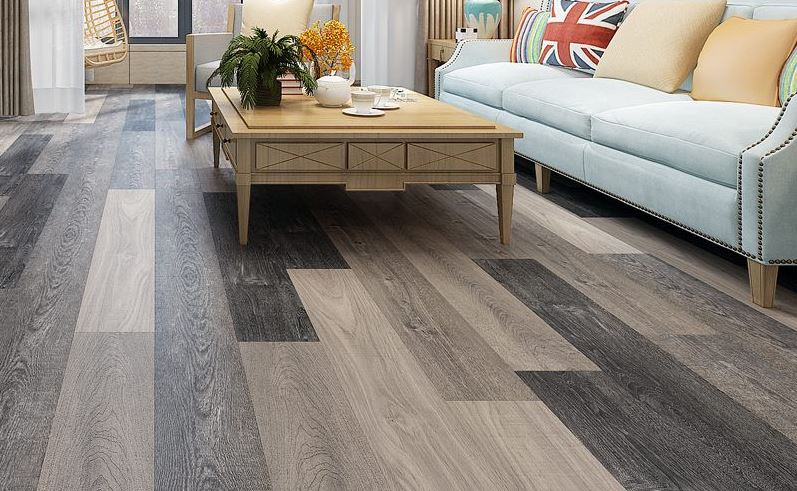When it comes to flooring options for your home or commercial space, the choices are vast—but none more commonly debated today than SPC flooring and traditional tiles. Both offer durability and aesthetic appeal, but if your top priority is low maintenance, which one truly delivers? In this in-depth comparison, we break down the pros and cons of both to help you make a smart, long-term decision.
What is SPC Flooring?
SPC (Stone Plastic Composite) flooring is a relatively new innovation in the world of resilient flooring. It combines limestone powder, polyvinyl chloride, and stabilizers to create a rigid, highly durable core. It often features a click-lock system for easy installation and is designed to mimic the appearance of natural materials like wood and stone.
Key features include:
- 100% waterproof
- Scratch- and stain-resistant
- No need for grout
- Easy DIY installation
What are Traditional Tiles?
Traditional tiles—such as ceramic or porcelain—have long been a staple in flooring design. Fired at high temperatures, they are extremely hard, water-resistant, and long-lasting, especially in high-moisture areas like kitchens and bathrooms.
Key features include:
- Fire- and water-resistant
- Long-lasting and durable
- Available in a wide range of colors and designs
- Requires grout and skilled installation
Installation: Which Is Easier?
One of SPC flooring’s major advantages is ease of installation. Thanks to its click-lock mechanism, most homeowners can lay it themselves with basic tools and minimal preparation. It can even be installed over existing floors like wood, tile, or concrete.
In contrast, traditional tiles require:
- Subfloor leveling
- Mortar application
- Cutting with special tools
- Grouting and curing time
Winner: SPC Flooring – If you’re aiming for a quick, DIY-friendly solution.
Maintenance & Cleaning: Which Is More Hassle-Free?
SPC flooring is known for its incredible ease of maintenance:
- Simply sweep and mop regularly
- No special cleaners needed
- No grout lines to worry about
- Resistant to stains, mold, and bacteria
Traditional tiles, while water-resistant, come with grout lines that can trap dirt and require regular scrubbing or sealing to stay clean and hygienic. Also, tiles can chip or crack if heavy objects are dropped on them.
Winner: SPC Flooring – Fewer maintenance headaches, no grout issues.
Water & Moisture Resistance: Are Both Safe for Wet Areas?
Both options score high in water resistance, but SPC takes the lead with its 100% waterproof construction. It doesn’t warp or swell when exposed to moisture and is ideal for:
- Bathrooms
- Laundry rooms
- Kitchens
- Basements
Porcelain tiles are also waterproof, but again, the grout is a weak point. It can discolor, mold, or deteriorate if not maintained properly.
Winner: SPC Flooring – Better long-term resistance without the grout hassle.
Durability: Which Lasts Longer?
Traditional tiles are known for their long lifespan, sometimes lasting decades if properly installed and maintained. They resist scratching and denting but can crack or chip from sharp impacts.
SPC flooring is also highly durable, with multi-layer protection that resists wear, but its lifespan is generally 15–25 years, depending on quality and usage. While less prone to cracking, it can dent under very heavy furniture or sharp objects.
Winner: Tie – Tiles win on longevity; SPC wins on impact resistance and flexibility.
Design Flexibility: Which Looks Better?
Both options offer a wide variety of design choices. However, SPC flooring is increasingly popular for its ability to replicate natural materials like hardwood, marble, and slate at a lower cost.
Tiles offer endless customization in size, pattern, and color, but SPC has:
- More warmth underfoot
- Less echo and noise
- A more forgiving surface
Winner: SPC Flooring – For modern interiors and comfort, SPC is often the go-to.
Cost Comparison
When considering cost, SPC flooring tends to be more budget-friendly, especially when factoring in the lower installation costs and minimal maintenance needs.
| Feature | SPC Flooring | Traditional Tiles |
| Material Cost (per sq.ft.) | $2 – $5 | $3 – $10 |
| Installation Cost | Low (DIY-friendly) | High (professional) |
| Maintenance Cost | Very Low | Moderate |
Winner: SPC Flooring – Lower overall cost over the lifespan of the floor.
Final Verdict: Which Should You Choose?
If your top priorities are low maintenance, ease of installation, and water resistance, then SPC flooring clearly comes out ahead. It’s ideal for:
- Busy households
- Rental properties
- Commercial spaces
- Renovation projects with time or budget constraints
That said, traditional tiles still hold their own for ultra-long durability, heat resistance, and classical aesthetics, especially in luxury settings or outdoors.
Conclusion
The ultimate showdown between SPC flooring Dubai vs. traditional tiles boils down to your specific needs. For modern homes seeking style, comfort, and convenience, SPC flooring is a smart, low-maintenance choice that saves both time and money.
Before choosing, consider your space, lifestyle, and design goals. And remember—great flooring isn’t just about looks. It’s about performance, too.

